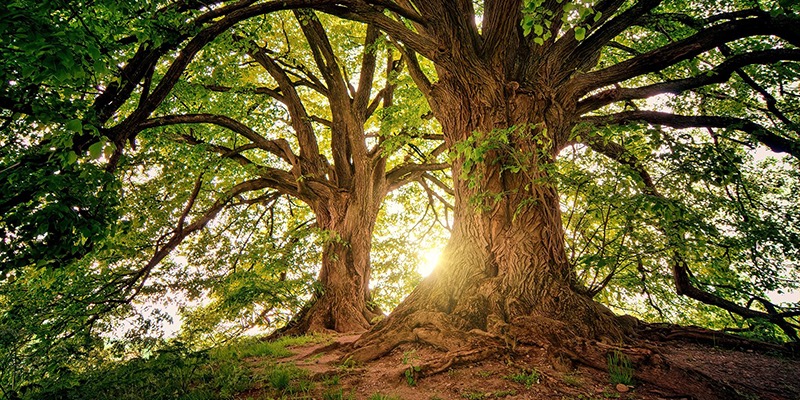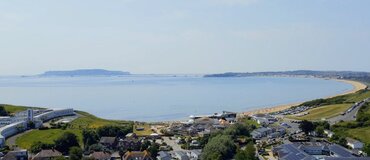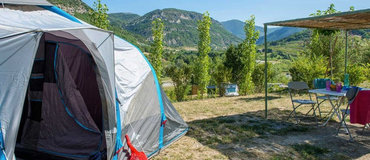
The perfect destinations for nature lovers, history enthusiasts, and anyone seeking that special serenity only found beneath a leafy canopy.
Our famous forests have served as hunting grounds for royalty, sheltered folk heroes, provided building material for the navy, and, more recently, featured as backdrops in blockbuster movies. Today, they’re some of our last areas of unspoilt wilderness. Here’s our guide to three famous forests of the UK.
The Forest of Dean
The forest of Dean is one of the last surviving ancient woodlands of England. It covers a secluded corner of Gloucestershire bordered by the River Wye to the West and the River Severn to the south. The 20 million trees that make up the forest are a mix of oak, beech, ash, birch, and holly. Deer, pine martins, wild boar, and peregrine falcons number among the forest’s animal inhabitants.
During the medieval era, Dean was a royal hunting forest. By the Tudor age, it had become a major source of timber for naval shipbuilding. A few centuries later, the Victorians greatly expanded the mining and industrial activity that had taken place in the forest since before the Roman invasion. In 1939, the Forest of Dean become the first designated national forest in Britain.
If the Forest of Dean’s distinctive woodland landscapes look oddly familiar that’s because you’re likely to have seen them before. The age and the tucked away isolation of Dean give the forest otherworldly ambience that has caught the attention of many directors and filmmakers. The numerous film and television scenes that have been shot in the forest include sequences in the blockbuster franchises Star Wars and Harry Potter.
Besides taking in the incredible forest and river valley views found along Dean’s many trails, you might also want to explore Puzzlewood, a maze of passages lined with moss-clad rock formations, mysterious caves, and ancient trees. If you want to travel around the area in style, book a ticket on the Dean Forest Railway, a heritage line run by vintage steam locomotives. Deep below the forest are the Clearwell Caves, an extensive network of caverns that have been mined for ochre pigments and iron ore for over 4,500 years. At Lydney Park, you’ll find beautiful gardens and the remains of a Roman temple.
Sherwood Forest
Once the woodland hideout of the legendary medieval folk hero Robin Hood and his Merry Men, Sherwood Forest is now a national nature reserve covering 1,046 acres of Nottinghamshire. The forest is thought to have formed at the end of the last ice age, making it at least 10,000 years old.
Today, Sherwood Forest largely consists of pine plantations. But it also remains a haven for ancient oaks, the oldest and most famous of which is Major Oak. This grand old tree has stood within the forest for between 800 and 1,000 years. Its boughs have grown so huge that they’ve required the support of scaffold posts since the 19th century.
Sherwood Forest is renowned for its bike trails, which range right the way from family-friendly to challenging routes for experienced off-road cyclists. The Sherwood Forest Art and Craft Centre is another big visitor draw. The centre occupies the former coach house and stables of Edwinstowe Hall and also includes a café. The week-long Robin Hood Festival is Sherwood Forest’s main annual event. Next year, expect the usual bombastic selection of medieval-themed entertainment including pavilions, jesters, musicians, alchemists, fire eaters, and jousting knights in shining armour.
The New Forest
‘The New Forest’ is something of a misnomer. In truth, the area is neither new nor strictly a forest. It’s a patchwork of woodlands interspersed by large tracks of heathlands, grasslands, and wetlands covering an area that spans southwest Hampshire and southeast Wiltshire.
‘Forest,’ in this instance, is used in reference to the ancient meaning of the word: a royal hunting ground.
William the Conqueror declared the New Forest royal land soon after securing the English throne in the 11th century. The area is described in lavish detail in the Doomsday Book and 90% remains crown property. During later centuries, The New Forest became another important source of timber for the Royal Navy. Many of the ships of Admiral Nelson’s fleet at Trafalgar were constructed from trees felled from the area’s woodlands. The New Forest was designated an Area of Special Scientific Interest in 1971 and became a national park in 2005.
The area’s many habitats are home to a spectacular range of wildlife. New Forest Ponies are indigenous to the region and one of its most iconic animal residents. The ponies are a common sight in all the natural habitats of The New Forest and are often seen roaming the streets of its towns and villages too. Buzzards and red kites number among the many magnificent species of bird that populate the area’s skies and canopies.
Hiking, horse riding, and cycling are all popular leisure activities in the New Forest. Visitor attractions include Hurst Castle, a Tudor coastal artillery fortress, and Exbury Gardens, an informal woodland garden with cafes and its own light steam railway. Exbury boasts a reputation for being the finest British garden of its type.
If woodland film locations have caught your imagination you’ll find plenty more on our Quirkiest Camping and Travel Comedies guide.

We hope you enjoy any future trip to one of the famous forests of the UK.







